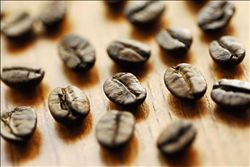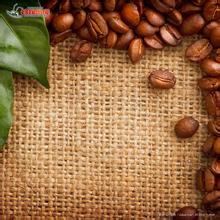Guatemala Coffee Flavor Guatemala treatment
Coffee production in Guatemala has declined relatively to 700 kg/ha, compared with 900 kg/ha in El Salvador and an astonishing 1700 kg/ha in Costa Rica. Guatemala's coffee export trade is controlled by private companies, but the National Coffee Council (Asociación Nacional de Cafe) controls the rest of the coffee industry. Some of Guatemala's finest coffee is exported to Japan, where it sells for $3 to $4 a cup. Most of the small-scale producers are descendants of Mayans, who like to be called natives.
They are also currently benefiting from a US-funded program known locally as "The Project," which plans to invest $2.5 million to encourage small, high-quality coffee plantations. The main regions of Guatemala that produce high-quality coffee are Lake Atitlan and Huehuentenango. The aim of the project is to help break the vicious cycle of high production and low quality that has plagued the world coffee industry. Bourbon trees, for example, grow taller and produce fewer beans than the new dwarf trees, and although they are both Arabica varieties, Bourbon trees produce better beans and are more popular with foodies. The project also hopes to encourage local producers to process coffee beans themselves, since most coffee cherries are now sold to middlemen, and the value and even quality of coffee could be improved if it could be processed in local factories.
Antigua is also a famous coffee producer. Antigua coffee is produced at Hacienda Carmona, where the best quality coffee is EL Pulcal, which is not only of good quality, but also richer in flavor, taste and tobacco flavor than other coffees in Guatemala. Every 30 years or so, the area around Antigua is hit by a volcanic eruption, which provides more nitrogen to the already fertile land, and sufficient rainfall and sunshine make the area more suitable for growing coffee. Other coffee producing areas include San Marco, Oriente & Coban and Palca.

Important Notice :
前街咖啡 FrontStreet Coffee has moved to new addredd:
FrontStreet Coffee Address: 315,Donghua East Road,GuangZhou
Tel:020 38364473
- Prev

Salvadoran coffee culture Salvadoran coffee flavor
In the early 1990s, guerrilla warfare greatly damaged the country's national economy, reducing coffee production from 3.5 million bags in the early 1970s to 2.5 million bags in 1990-1991. The eastern part of the country was most affected by guerrilla warfare, and many farmers and workers were forced to leave the manor. The shortage of funds has led to a sharp drop in coffee production, from 1200 kg per hectare in the past to no yield per hectare today.
- Next

The Development of Coffee in Honduras Origin of Coffee in Honduras
Overall, Honduran coffee has a good reputation and is suitable for mixed coffee. Coffee in Honduras is imported from El Salvador. Honduras produces high-acid high-quality coffee. Like other places, the coffee grade in Honduras depends on altitude: coffee grown at 700 to 1000 meters above sea level is medium, and grown at 1000 to 1500 meters above sea level
Related
- Does Rose Summer choose Blue, Green or Red? Detailed explanation of Rose Summer Coffee plots and Classification in Panamanian Jade Manor
- What is the difference between the origin, producing area, processing plant, cooperative and manor of coffee beans?
- How fine does the espresso powder fit? how to grind the espresso?
- Sca coffee roasting degree color card coffee roasting degree 8 roasting color values what do you mean?
- The practice of lattes: how to make lattes at home
- Introduction to Indonesian Fine Coffee beans-- Java Coffee producing area of Indonesian Arabica Coffee
- How much will the flavor of light and medium roasted rose summer be expressed? What baking level is rose summer suitable for?
- Introduction to the characteristics of washing, sun-drying or wet-planing coffee commonly used in Mantenin, Indonesia
- Price characteristics of Arabica Coffee Bean Starbucks introduction to Manning Coffee Bean Taste producing area Variety Manor
- What is the authentic Yega flavor? What are the flavor characteristics of the really excellent Yejasuffi coffee beans?

